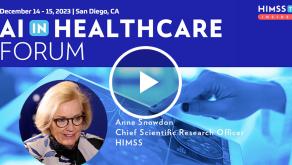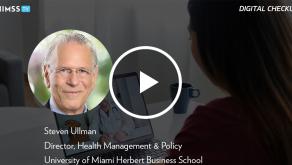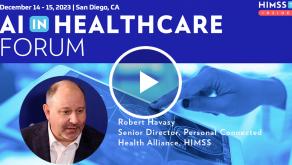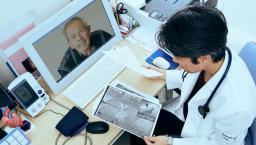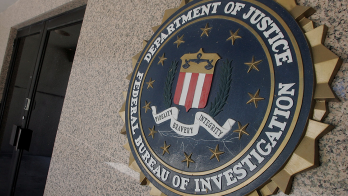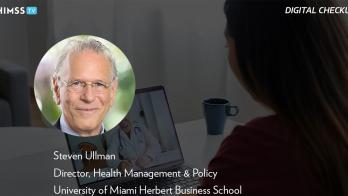Addiction recovery provider sees success with AI-enabled telehealth meds monitoring

Bill Farr (pictured) and his brother Dr. Peter Farr, who runs an Indiana addiction medicine practice, are cofounders of Atadas
Photo: Bill Farr
An addiction medicine practice in Fishers, Indiana, run by Dr. Peter Farr has in two years seen a cohort of 100 patients remain in his medication-assisted treatment program 94% of the time using a new technology, developed with cofounder and brother Bill Farr, compared with 54% of the time without the technology. Dr. Farr runs the addiction practice and also is cofounder of Atadas, a telehealth medication monitoring technology company.
THE PROBLEM
The opioid epidemic is entering its third decade. Better solutions are needed to move patients beyond treatment and into recovery, Farr said.
A $50 billion opioid settlement fund is dispersing to states, which decide on qualifying organizations to receive these funds. Congress removed some of the regulatory burdens and the DEA X-waiver to allow more providers to enter addiction medicine.
"Moreover, Narcan recently moved to over-the-counter status," Farr noted. "These are good steps; however, we believe the secret to accountability is improving the level of patient-provider engagement and keeping those practicing addiction medicine compliant with all required documentation.
"The state of the world after March 2020 and the sheer magnitude of subsequent lockdowns ignited the problem that many providers share in this specialized type of medicine," he explained. "These providers are driven by a calling and by empathy. Many providers of medication-assisted treatment recognize the level of high-touch care that is needed to improve outcomes."
These providers' most serious problems used to be how to keep opioid-use disorder patients in treatment, along with how they are monitored taking medications when they could not visit physician offices.
"We came up with the idea to create a mobile app that patients could use to better connect with their treatment and their physicians, while helping the providers comply with treatment regulations," Farr said. "Our software developers then furiously went to work to create this innovative platform and to interface with EHRs."
PROPOSAL
Farr believed better technology was needed for monitoring medication-driven treatments for addiction to better address the opioid epidemic in this country and to help restore the livelihoods of families for generations. To potentially resolve the problems that providers and patients face, Farr and his team focused on four areas, all of which remove the manual, paper-driven process:
-
Patient engagement – engagement within a mobile app to keep patients in their treatment and recovery process to ensure positive outcomes.
-
Virtual care – automation of scheduling and managing the required patient assessments, consent agreements and documentation.
-
Medication adherence – take-medication reminders, dosage logs and random pill counts.
-
Compliance data collection, given this highly regulated field of addiction medicine.
"With data interaction from the patient using the mobile app, combined with data from electronic health records, the proposed platform finds gaps in treatment care that benefit providers who are very busy and patients who share the burden of accountability," Farr explained. "Frequent feedback indicates patient gratitude for this specialized care and the enhanced relationship that the technology enables in their recovery.
"On the patient dashboard, a few clicks show the status of all paperwork and consent forms, which are requirements," he continued. "The system alerts providers when patients miss crucial responsibilities within their medication-assisted treatment program: pill counts, clinic appointments, screenings and facilitator-led support meetings."
It prompts for whether a pregnancy test has been performed on female medication-assisted treatment patients given the concerns about withdrawals in newborns. All of these components are critical for quality of care and for documentation if an audit is performed.
"Additionally, this technology is different from an EHR," Farr noted. "EHRs only manage clinical encounters. No EHR systems combine patient engagement, medication adherence, virtual care and compliance, which encompass some of the important medication-assisted treatment provider challenges.
"Atadas simultaneously addresses all of these critical factors with the goal of patients staying in medication-assisted treatment programs longer," he continued. "Payers also appreciate when a longer continuum of care can be associated with avoidance of overdoses or, worse, deaths."
MEETING THE CHALLENGE
Three technology trends add value to addiction medicine: telehealth, patient data interoperability and artificial intelligence, Farr said.
"Addiction treatment telehealth models were proven during the COVID public health emergency," he explained. "Besides video sessions, we added remote telehealth-based medication monitoring for treatment compliance, diversion control, and messaging with our patented pill count and accountability platform.
"Our telehealth approach for the management of OUD results in increased patient retention and lower compliance costs," he continued. "While the platform does not require interfacing with EHRs, we went ahead and created standard interfaces using Health Level 7 and Fast Healthcare Interoperability Resource messaging formats, initially within the Nexus Clinical EHR system."
With emerging digital health interoperability technologies such as Data as a Service (DaaS), firms like Zus Health deliver these interfaces. This step leapfrogs the need for duplicating EHR interfaces. Access to patient health history would be more efficient with DaaS, which, combined with Farr's AI capabilities, can help manage OUD disease surveillance across large and small populations.
"This is evident by our collaboration with Hn4 Solutions for the Navajo Nation's Tribal Opioid Response project," Farr noted. "On a macro level, we use mobile technology, along with cloud and AI, to meet the industry's challenges and to facilitate secure communication between the patient and the provider.
"Cloud and AI technologies save providers precious time by taking out manual processes," he said. "The combination of the patient mobile app and the provider cloud system automates various checks and balances, such as appointments, pill counts and medication reminders. A custom dashboard facilitates analysis of all moving parts to avoid diversion of controlled-substance medications."
Beyond provider practices and tribal communities, multistate clinic providers started applying this technology for patient engagement, including messaging and medication adherence.
"What used to take 15 minutes per patient to document accurate pill counts is cut down to two minutes – over an 80% reduction of time," Farr reported.
RESULTS
Within an initial pilot of 256 patients, Dr. Farr had a 95% acceptance rate from patients. In the two years following a cohort of 100 new-start OUD patients, 94% remained in the medication-assisted treatment program. Prior to the time using the technology, attrition rates from new patients starting treatment hovered around 54%.
"There also is less time wasted in conversations at the pharmacy," Farr said. "Patients use the app to text providers in real time with questions. They get reminded to take their meds, submit pill counts and to verify the accuracy of their treatment regime.
"Less medical assistant time and fewer resources are spent attempting to get pill counts," he continued. "Getting more accurate pill counts increases trust and lessens demands for inpatient follow-up. Care teams now can focus more on patient care. All of these metrics improve care, increase efficiency and save costs."
ADVICE FOR OTHERS
"If your goal is to keep patients in treatment longer, invest in patient-centered technology that creates accountability and keeps your patients engaged – or apply for part of the $50 billion in opioid settlement funding where medication-assisted treatment is a required use of these funds," Farr advised. "The technology should eliminate manual inputs that can cause oversights and human-made errors, and help patients and providers succeed together.
"Statistically, the management of OUD affects families for generations," he continued. "Someday, we want to see patients' families use the technology and be part of that increased engagement and accountability. We want them to share in the accomplishments their loved ones make. All of us want to celebrate their recovery."
Follow Bill's HIT coverage on LinkedIn: Bill Siwicki
Email him: bsiwicki@himss.org
Healthcare IT News is a HIMSS Media publication.





